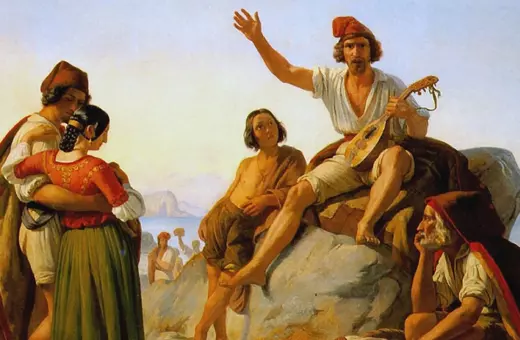One person likes Britney, another likes Beethoven. One person can discern the notes and texture of a Merlot, another just enjoys a glass of red. But is taste purely subjective? For Hume, good taste was discerned by a good critic, who met certain criteria – a kind of virtue aesthetics (in place of virtue ethics). However, things are not quite that simple, writes Nick Zangwill.
In his essay "Of the Standard of Taste," Hume set himself a problem. He takes off from a "sentimentalist" view of taste, according to which “beauty and deformity . . . are not qualities in objects, but belong entirely to the sentiments.”
Such a sentimentalist view stands in opposition to a view according to which judgments of taste or beauty are "determinations of the understanding" which represent qualities of beauty and deformity. What is this distinction between 'understanding' and 'sentiment', which is so fundamental for Hume? He writes: “All determinations of the understanding . . . have a reference to something beyond themselves, to wit, real matters of fact.”
Hume is here talking about what philosophers nowadays call a "belief" or a "cognitive state": a belief represents a state of affairs, and when it is true, it is true in virtue of the fact or state of affairs which it represents. What is a sentiment? It is a felt reaction to a belief or perception—paradigmatically a pleasure or displeasure. It is what philosophers nowadays call a "noncognitive" state.
It is often objected that noncognitive states also represent real matters of fact, just like cognitive states. We are pleased about things; we are proud of things. If so, wherein lies the difference between understanding and sentiment, or between cognitive and noncognitive states? Hume seems not to have given us a satisfactory account of the distinction. Many have taken Hume to be making a simple blunder when he writes: "sentiment has a reference to nothing beyond itself" and "no sentiment represents what is in the object" (p. 230).
Since there is no genuine property of beauty, there are no facts or states of affairs which consist in things possessing this property. Sentimentalism means that there is no aesthetic reality.
But the blunder lies in the uncharitable interpretation of Hume, not in Hume himself. For Hume does not mean to deny that sentiments have content; he is not denying the obvious truths that we are pleased at or by various things. The point is just that the sentiment does not represent any distinctive quality of objects over and above what is represented in the belief or perceptual experience to which it is a reaction. This is why the sentimentalist view is bound up with the metaphysical claim that "Beauty is no quality in things themselves" (p. 230). Since there is no genuine property of beauty, there are no facts or states of affairs which consist in things possessing this property. Sentimentalism means that there is no aesthetic reality.
Unlike many who wish to avoid a cognitivist and realist position in aesthetics, Hume is sensible enough to recognize that it is essential that he avoid the view that "All sentiment is right" or that "every individual ought to acquiesce in his own sentiment, without pretending to regulate those of others". The trouble with this is that,





















Join the conversation